Yeah! That title sure sounds like an ad…and it is.
REI is one of my favorite places to shop for outdoor stuff, so I thought my readers might like to know that today is the last day of the 4th of July sale at REI.
WildeHerb is a collection of wild herb and wildflower sightings.
A beautifully deep shade of purple drew my attention to the flowers of Bugle. A new spring roadside weed for me!
Spikes of deep purple stood less than a foot tall but the color was so vivid that the shade of the nearby trees didn’t hide these weeds growing by a two-lane road next to the creek.
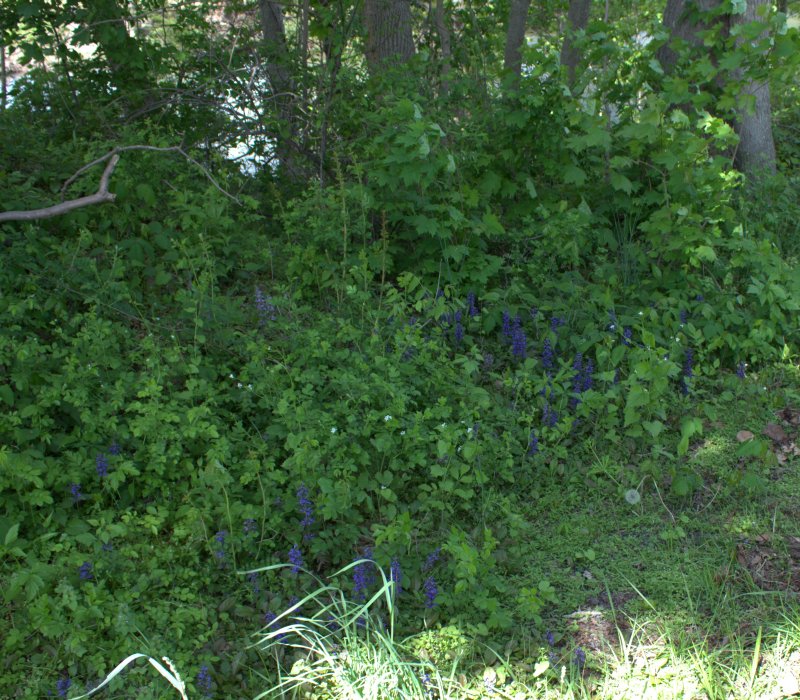
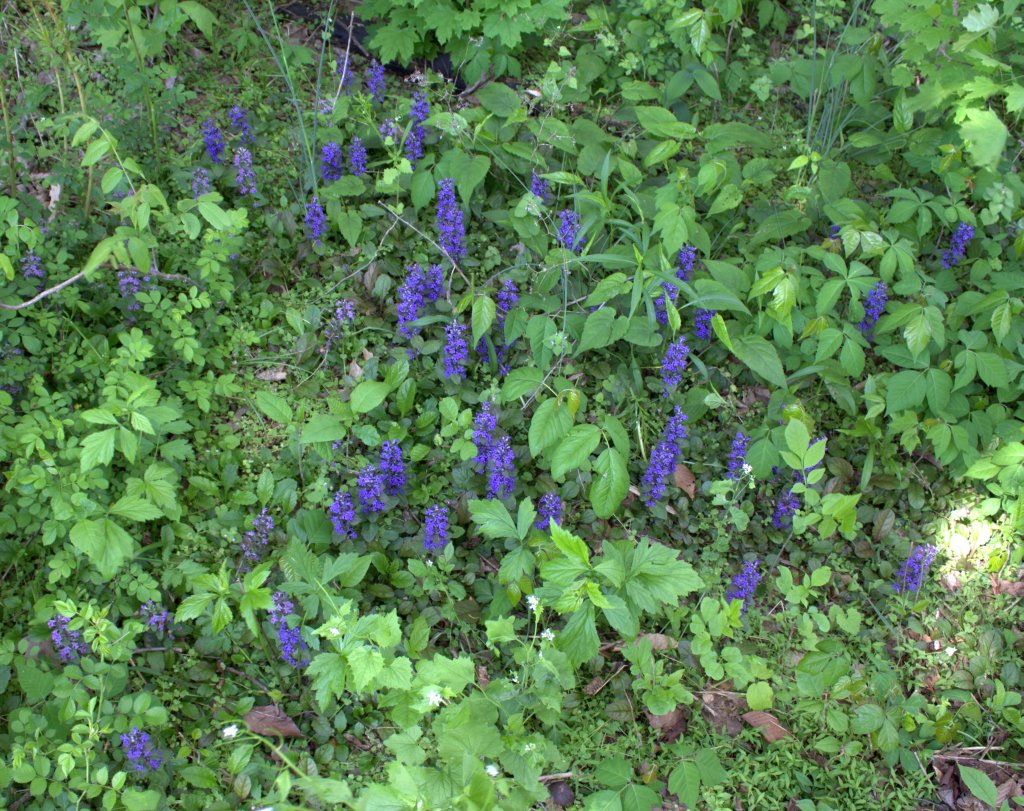
Bugle, Ajuga reptans, is alien to America and native to Europe, but you can find it growing wild in America along roadsides because it has escaped from gardens. Bugle’s tendency to form mats could make it an undesirable alien if not an invasive one.
Another common name for bugle is bugleweed, but that’s not to be confused with Bugleweed, Lycopus virginicus, a very different-looking herb native to North America that has some medicinal qualities.
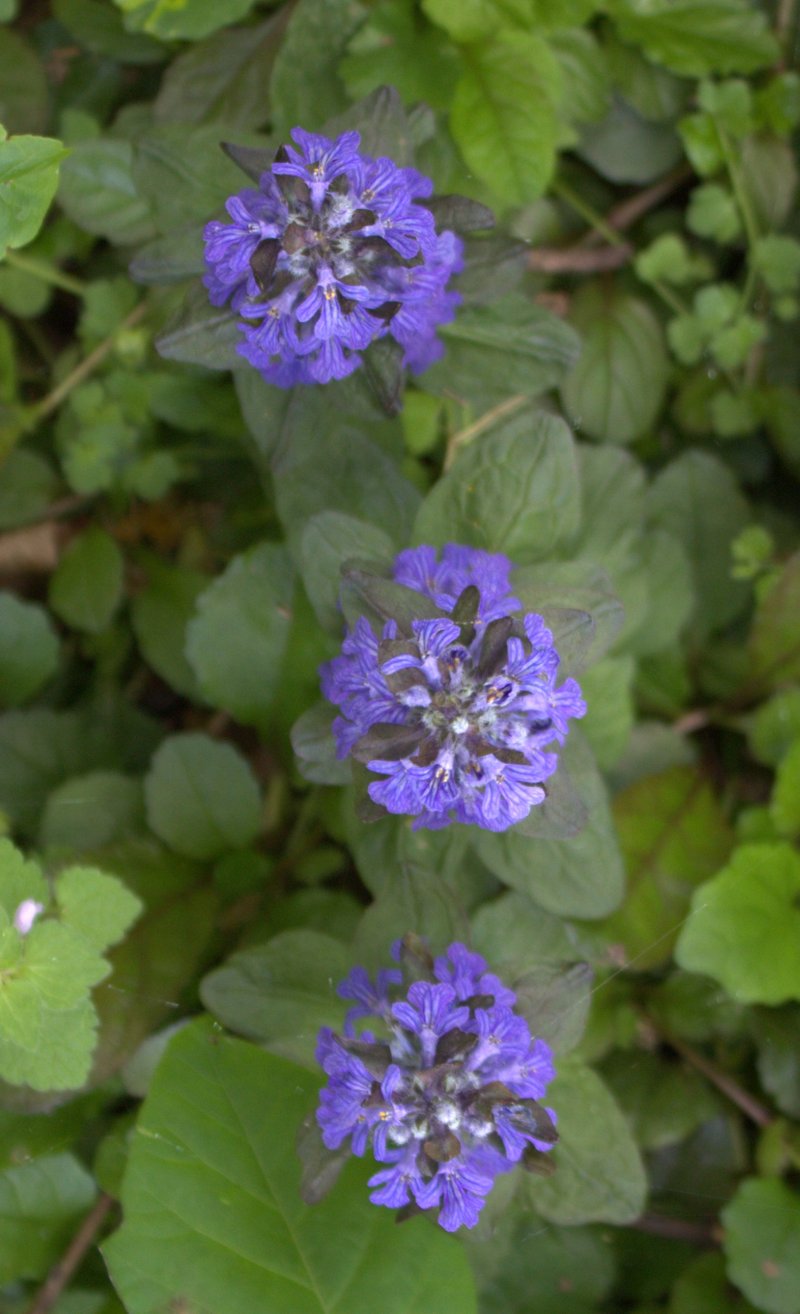
Several flowers grow in the leaf axils. Flower shape is tubular and the lower central lip is long and gracefully cleft.
Q: Interested in learning more about what plants are invasive and why that matters?
A: Head on over to Invasive Plants by the United States National Arboretum for all the information you’ll need. Scroll down that page for a link to your state where you can find out more about invasive plants that are causing problems in your locale.
For Pennsylvania the DCNR lists many forbs/grasses as invasive.
For a plant to be invasive
Wild Pink would make a nice addition to any garden. It’s low to the ground and the flowers are a delightful light pink color.
Who says pink isn’t a natural color?
Wild Pink, Silene caroliniana, looks similar to a common garden plant called moss phlox. Moss phlox, Phlox subulata, is popular in gardens and you’ll see it planted around houses as it’s a popular landscaping plant that flowers in neon-bright colors.
By the way during the month of May you can see a great display of a tall Wild Blue Phlox, Phlox divaricata, at Shenk’s Ferry.
Wild pink flowers range in color from the lightest pink, almost white, to a dark pink. Flowering in the middle of May most of the flowers are light pink in color.
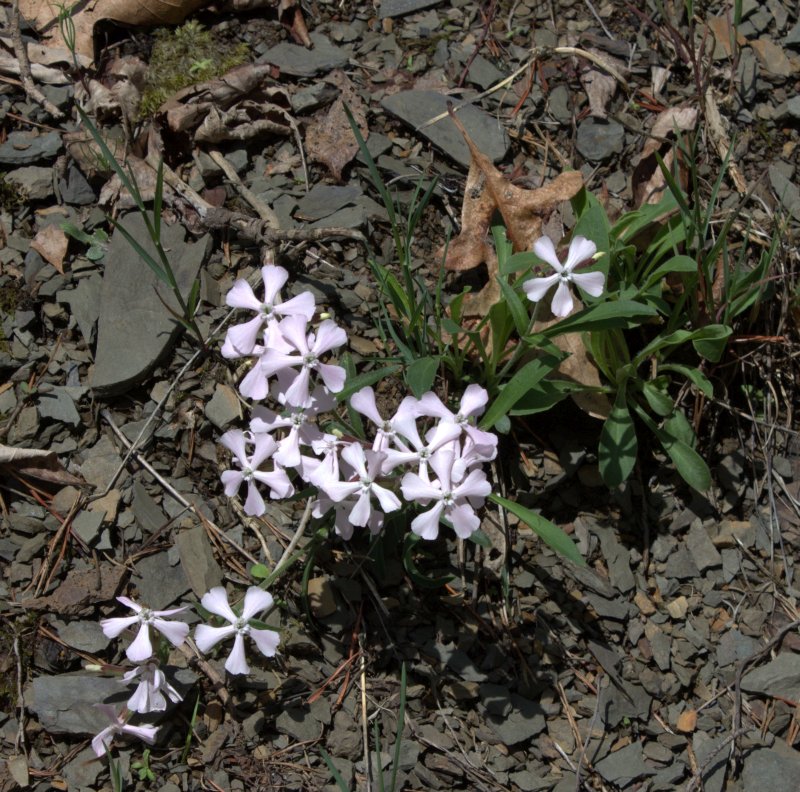
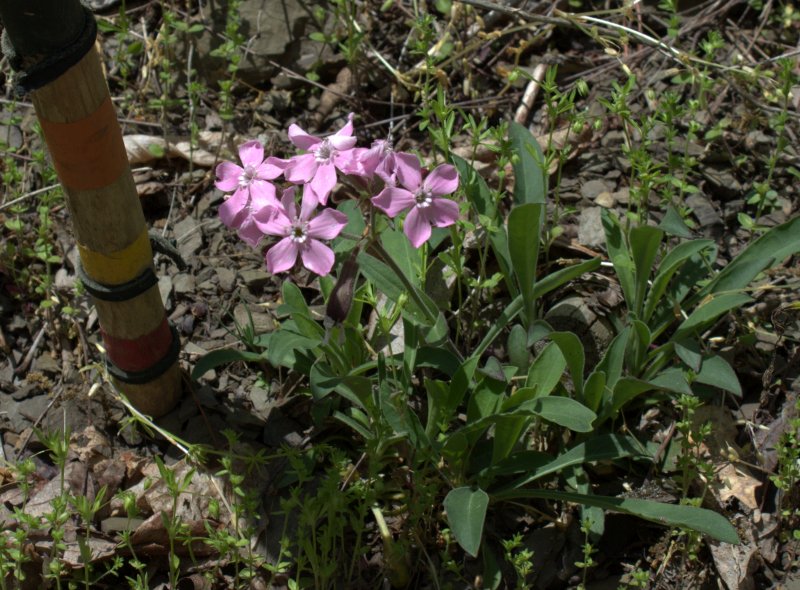
The whole plant will get only a few inches tall. The photo above shows the flower stalk reaching about 5 inches high, a little taller than the leaves.
Q: What large black beetle has really long antennae and white spots on its back?
A: The Asian Long-Horned Beetle and its look-a-like the White-Spotted Pine Sawyer.
We were sitting out on the deck one afternoon for lunch when a really loud bug flew by. It made a rattling sound that really caught my attention. Was it her wing covers clicking together as she worked her wings to get to her destination?
When it landed on the edge of the deck I got these pics. Photos taken 3 June 2014.
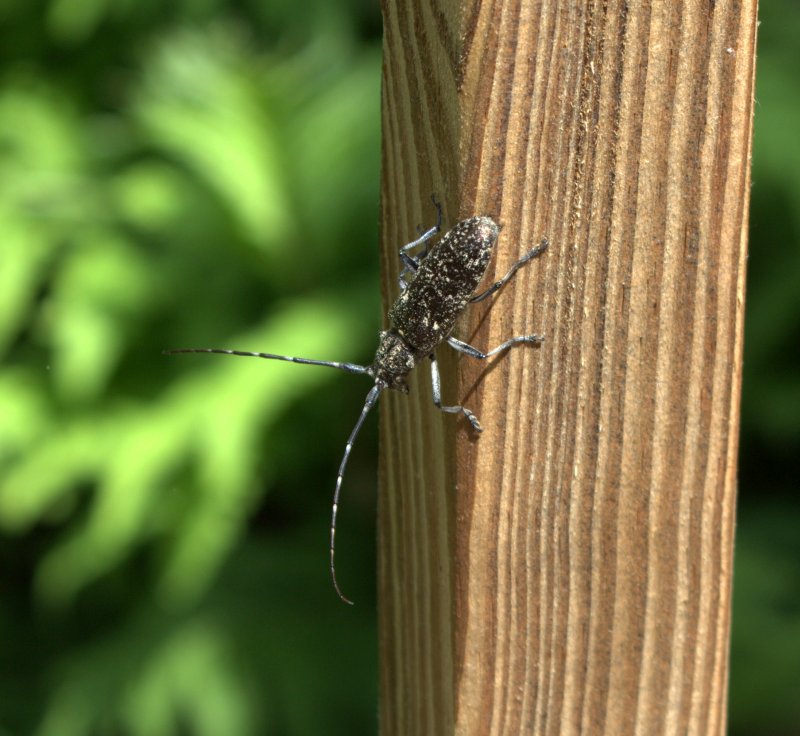
At first we thought it was the Asian Long-Horned Beetle as the general characteristics seemed right.
Wild Geraniums are one of my favorite forest plants. The light purple flowers appear in May or late April. Rains at this time of year will beat down existing blossoms or make them drop some petals, but other flower buds will open to replace them.
The wild geranium blooms for a couple of weeks or longer with the largest and oldest plant blooming the longest. Flower buds open in succession so that some will be spent and developing their beak-like seedpods before others are in complete bloom. Photos taken 16 and 26 May 2014.
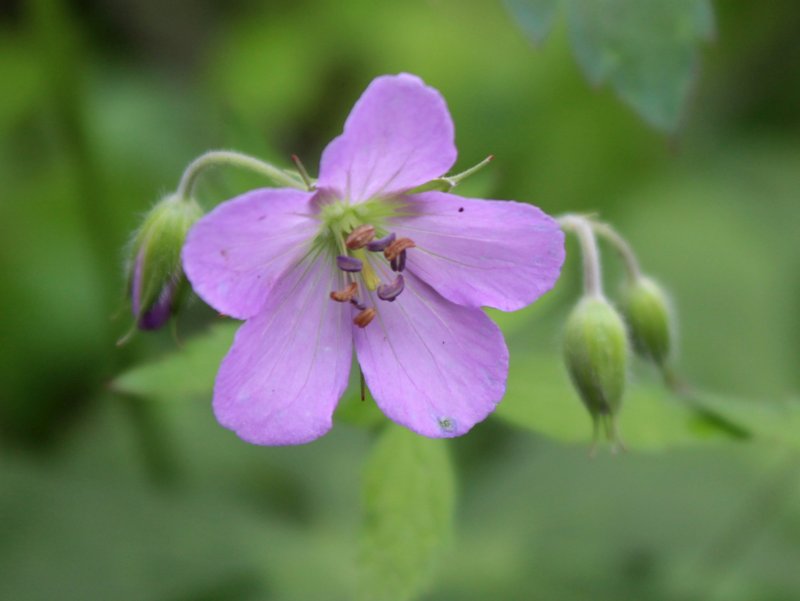
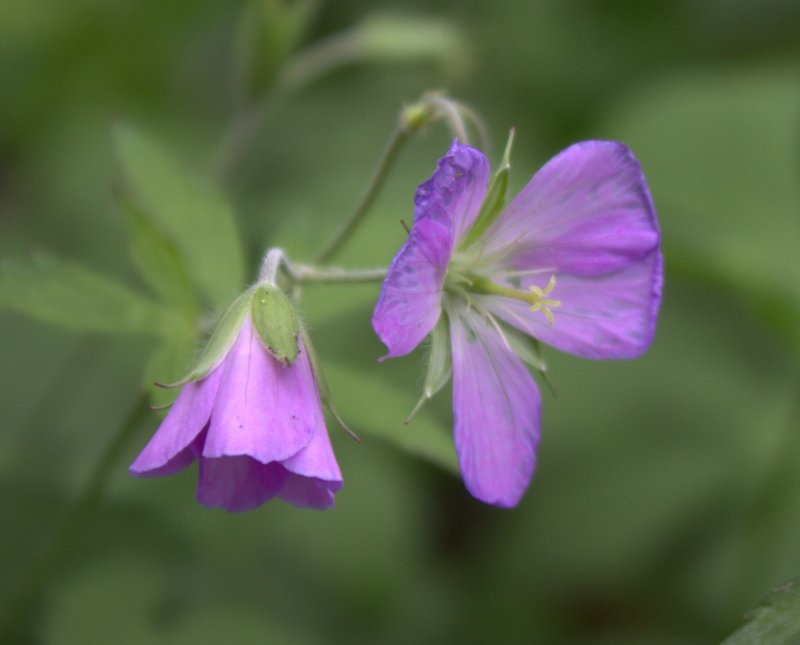
In our area of the Appalachian Mountains in South Central Pennsylvania we saw wild geraniums blooming for 4 weeks from the middle of May to the middle of June. Most years I would start looking for them to flower in the beginning of May.
Large plants may bloom for a couple of weeks, while plants in different locations will bloom at slightly different times. For instance, the wild geraniums on a south-facing slope may bloom a week earlier than a similar-sized plant on a north-facing slope.
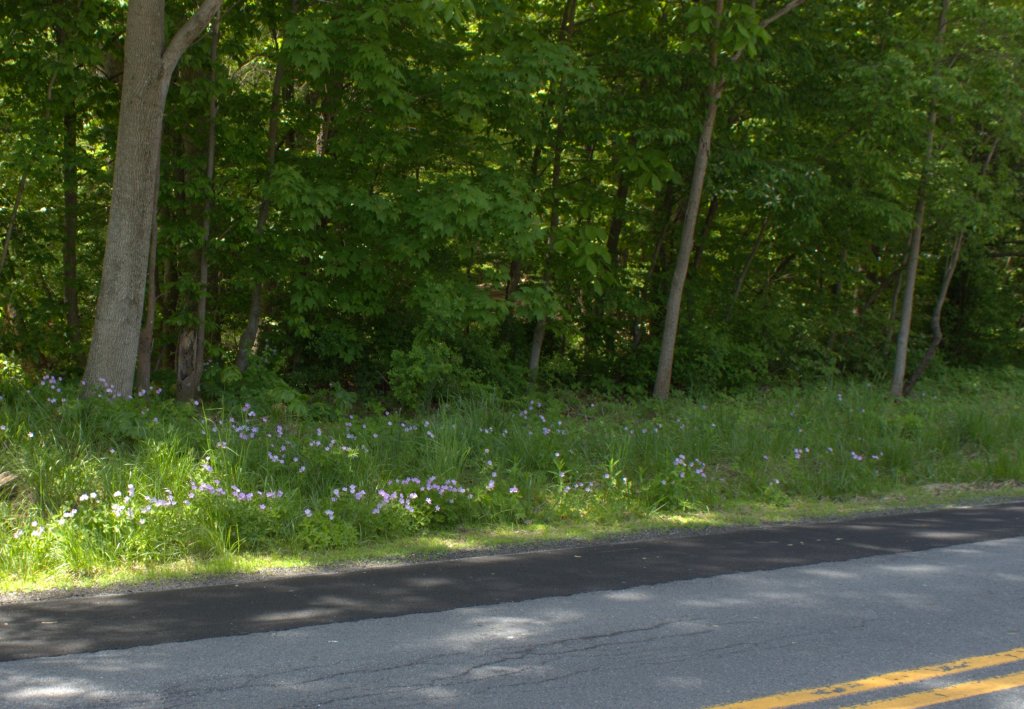
The foliage is quite noticeable. I mean, it’s pretty easy to identify. Look for the palmate leaves in clumps near forest openings, along roads near wooded lots, and surely along hiking trails in Eastern North America.
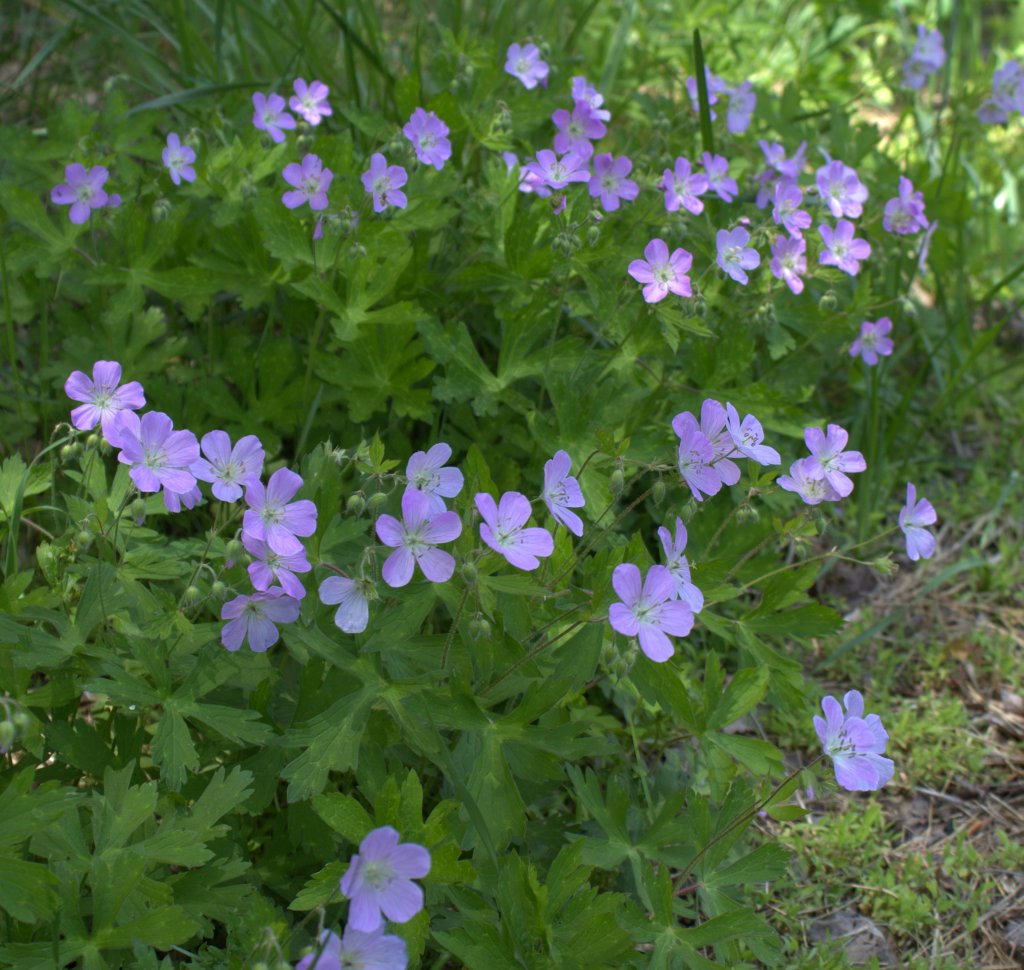
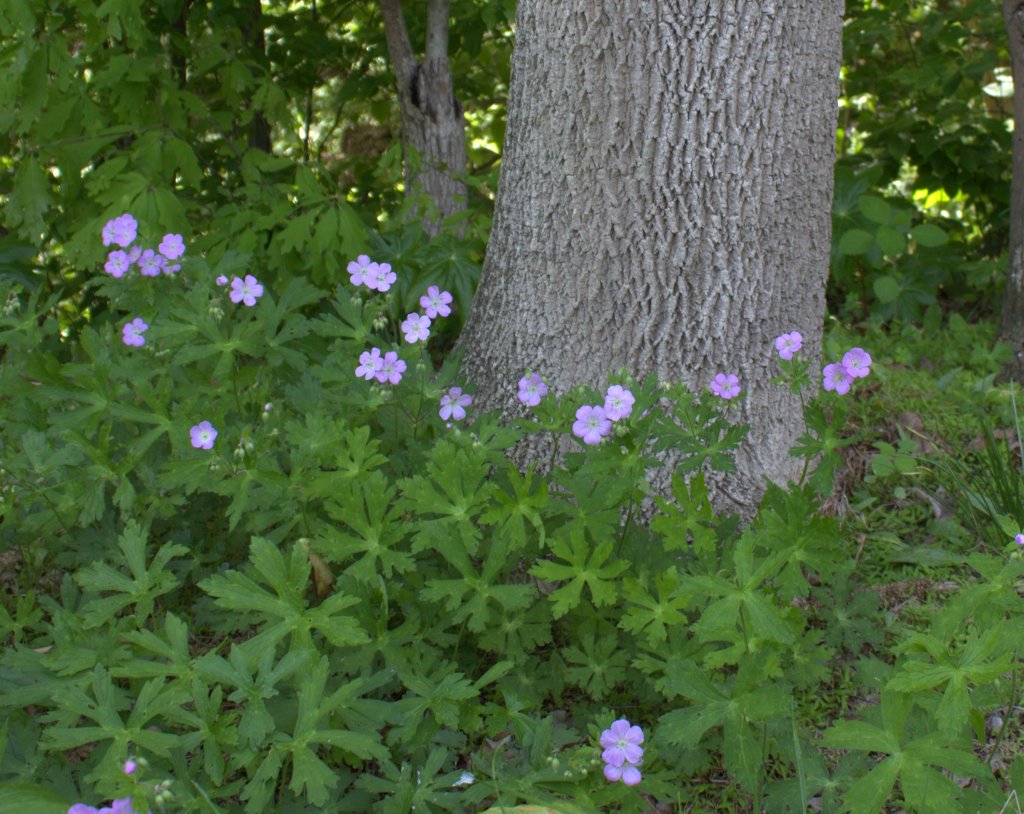
Dame’s Rocket is all but done blooming for this year. Even though it’s an invasive plant I admit I still enjoy seeing it in bloom.
Just yesterday we saw a few plants still holding on to their flowers while on a drive in the Allegheny Mountains of Central Pennsylvania.
Some of the most common plants we see today came from afar and that is the case with Dame’s Rocket, Hesperis matronalis. It is original to Asia and Europe and was supposedly brought to America back in colonial times as a garden plant. I can see why – the deep purple, pink or white flowers are real pretty flowering along Pennsylvania roads in late May.
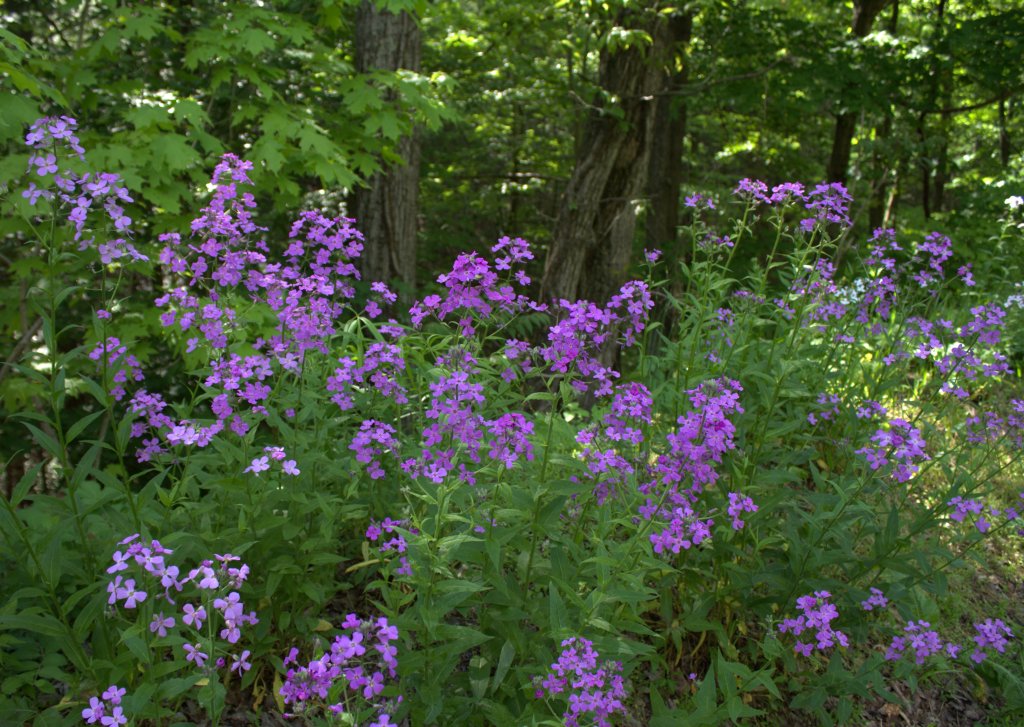
Dame’s Rocket has had a few hundred years to spread out in America, so we’re sure it’s here to stay.
Every year I visit this particular section of the woods to see how the Large Whorled Pogonia is making it.
Large Whorled Pogonia, Isotria verticillata, is a native orchid that we have growing wild on the mountain top. I’ve seen only a few flowers in the nine years since I discovered this group of plants and they were all blooming only in that one year. My pics of the flowering Whorled Pogonia were from 2010.
According to Peterson’s Field Guide to Wildflowers a close relative, the Small Whorled Pogonia, I. medeoloides, is a rarity to see in bloom, if at all:
“This plant remains dormant underground for as much as 10 to 20 years before reappearing.”
Who knows what factor governs the reappearance and blooming of the Large Whorled Pogonia.